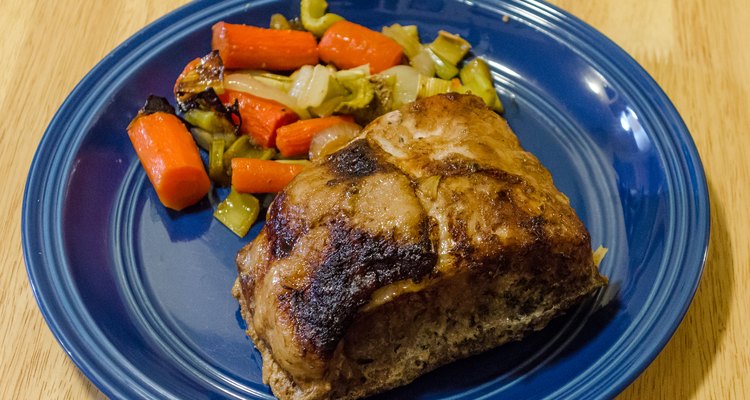
There are a variety of cuts that are called pork roast. Pork loin is a long muscle along the spine. The blade end is closer to the shoulder and the sirloin is closer to the rump. The tenderest and leanest roast is the tenderloin, from the center of the pork loin. Pork butt and picnic shoulder roasts are cut from the shoulder, have more fat and connective tissue than the loin, and need to be roasted longer. Pork ham, cured or fresh, is cut from the hindquarters.
Pork Tenderloin
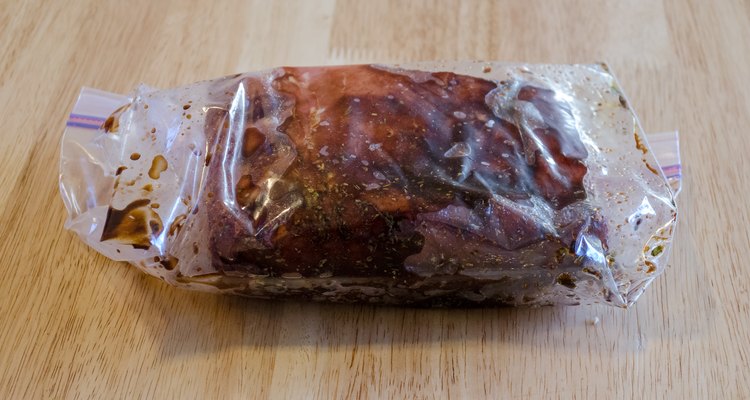
Make a marinade with flavorings that you prefer. Choose light soy sauce, minced garlic, minced ginger, sugar, sake and/or rice wine vinegar in a plastic bag. Put the pork tenderloin in the marinade, squeeze as much air as possible out of the bag and seal it. Marinate for two hours or overnight in the refrigerator. Turn the roast over at least once. You may also purchase a pre-made marinade from your grocer.
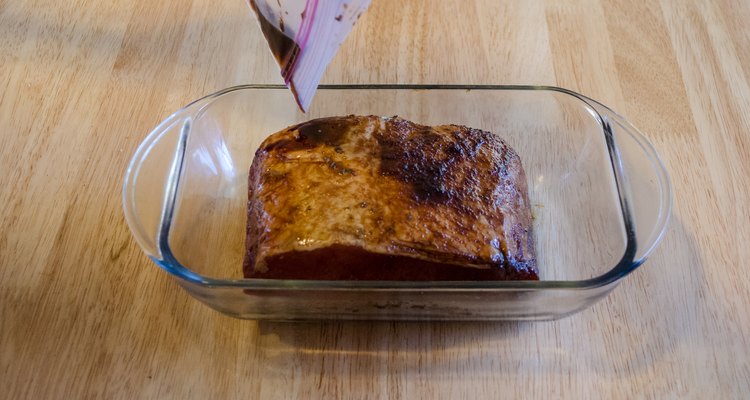
Preheat the oven to 350 degrees Fahrenheit. Put the marinade and pork roast in the roasting pan, and discard the plastic bag. Roast until the temperature in the center of the roast is 155 degrees, testing with an instant-read thermometer. Start checking the temperature half an hour after you put the roast in the oven.
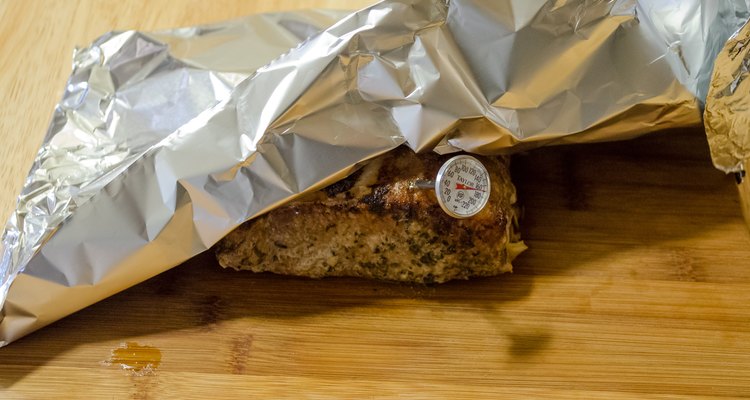
Place the roast on a cutting board and cover with foil. Carryover cooking will raise the internal temperature to about 160 degrees Fahrenheit. Let the roast rest for 10 minutes while you strain the pan juices and bring them to a boil. Serve the pan juices on the side.
Roast Picnic Shoulder
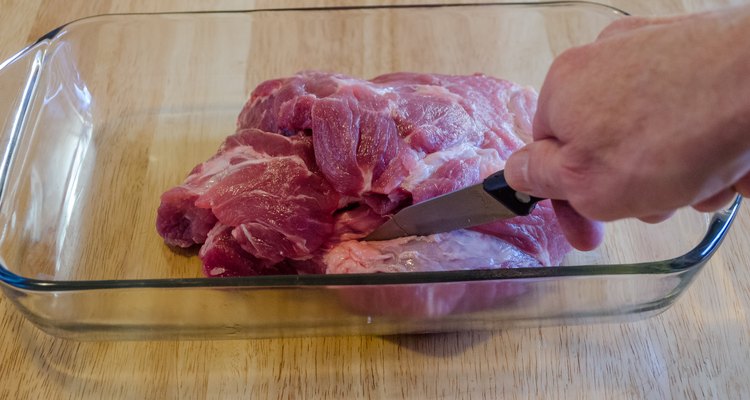
Preheat the oven to 325 degrees Fahrenheit. Place the picnic shoulder roast on a rack in the roasting pan, fat side up. Make shallow cuts in the rind and fat. Rub the cuts with salt.
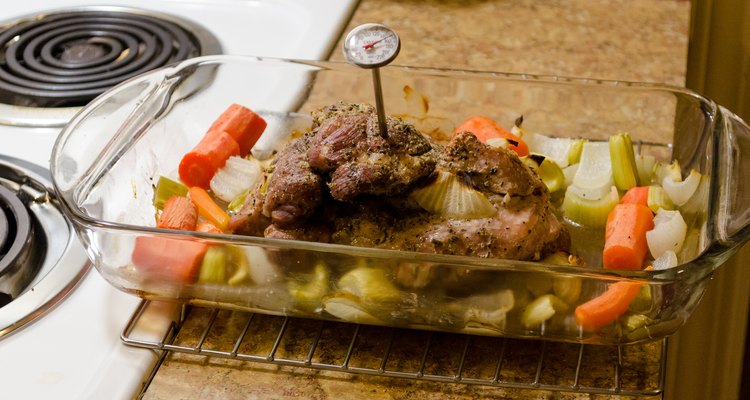
Cook the roast until it reaches an internal temperature of 155 degrees Fahrenheit, testing it with an instant-read thermometer. Make sure the thermometer pierces into the center of the meat, and doesn't rest on the bone. Because this roast cooks a little more slowly than tenderloin, start checking the temperature an hour after you put the roast in the oven.

Remove the roast from the oven and place it on a cutting board. Cover with foil to allow the roast to rest and come to about 160 degrees internally, about 15 minutes.

Remove as much fat as you can from the roasting pan. Pour in some water and stir over low heat to dissolve the drippings. In a frying pan, heat the fat from the roasting pan and stir in flour until the mixture bubbles. Add the pan juices and stir until the mixture begins to thicken. Serve over slices of roast pork.
Related Articles
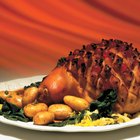
How Do I Cook Boneless Pork Leg Roast ...

How to Marinate a Top Round Roast

How to Cook a Deer Neck Roast in a Slow ...

How to Slow Cook an Eye of Round Roast ...
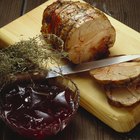
What Does It Mean to Score Roast Pork?
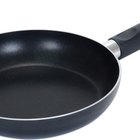
How to Cook Beef Top Round Pot Roast
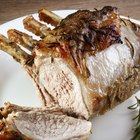
How to Cook a Rack of Pork
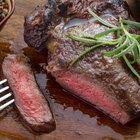
How to Cook a Seamed Eye Round
How to Slow Cook a Pot Roast With Beef ...

How to Cook a 15-Pound Rib Roast
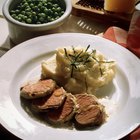
How to Make a Juicy Pork Tenderloin
How to Smoke Venison Neck Roast

How to Use Lime Juice to Tenderize Steak

How Long to Cook a Rump Roast for It to ...

How to Roast an Eye Round Roast at High ...

How to Cook Pork Hamonado
How to Cook a Lamb Square Cut Shoulder

How to Tell If a Pork Roast is Done
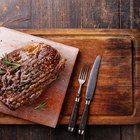
How to Slow Roast an Angus Roast

How to Cook a Beef-Pork Combo Roast
References
Resources
- Barefoot Contessa at Home; Ina Garten
Tips
- If you want a darker crust to your pork tenderloin, brown it on all sides in a frying pan, about 10 or 12 minutes altogether, then put it in the hot oven to finish cooking. Check the temperature with an instant-read thermometer after 15 minutes in the oven.
- If you don't want to use a marinade, simply rub the pork tenderloin with salt and pepper on all sides before cooking.
Warnings
- Overcooking is what makes pork roast too dry. Rely on your instant-read thermometer.
Writer Bio
Ramona French owned a massage school and taught massage for 28 years. In that time she wrote textbooks on Swedish, acupressure, deep tissue and lymph drainage massage. She is the author of "Introduction to Lymph Drainage Massage" and "Milady's Guide to Lymph Drainage Massage." Her book, "The Complete Guide to Lymph Drainage Massage," published by Milady, was released in October 2011.
Photo Credits
Lawrence Roberts/Demand Media